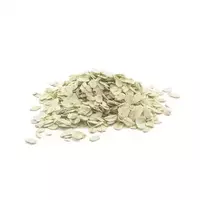Rice flakes

As you know, historically, India, Thailand and Indochina are considered the birthplace of rice - countries where this cereal culture began to be cultivated more than seventy centuries ago. By the way, unlike Europe, where rice was brought only after the campaigns of Alexander the Great, in our country the first rice crops began to appear only in the seventeenth century by order of Peter I. The very word "rice" in Russia comes into use at the end of the nineteenth century - until that time it was called Saracen wheat or Saracen grain.
Today, the nutritional and beneficial properties of not only the grain itself, but also its derivatives - rice flour, paper, noodles, vinegar and, undoubtedly, rice flakes are highly appreciated. Healthy rice cereal porridge has long been a very important and healthy breakfast for many groups of people.
To make rice flakes tasty, while retaining most of their valuable properties, you need to boil water or milk, and then pour a hot liquid over the rice flakes. It is best to cover the steamed rice flakes with a lid, leaving them so for ten minutes that the porridge has time to cook well.
Rice flakes, along with all other cereals, are perfectly combined with berries, fruits, as well as various types of nuts. Instead of sugar, you can add natural honey or homemade jam when making porridge from rice flakes. The calorie content of rice flakes (usually instant) averages about 360 kcal per hundred grams of this healthy product.
Benefits of rice flakes
Undoubtedly, the nutritional value of rice flakes is not so small, but rice is recognized as a dietary product, as it contains easily digestible proteins. That is why, if you want to get a considerable part of the biologically active substances and vitamins necessary for the body, as well as a charge of vigor and a surge of strength for the whole day, it is recommended to prepare rice flakes on water. Thus, you can not add calories to the finished dish, have excellent breakfast and fully benefit from rice flakes.
The composition of this valuable product includes dietary fiber and saturated fatty acids, as well as a whole group of vitamins important for human health of the PP, B, E and choline groups. There is no denying the benefit of rice flakes also because they are rich in elements such as iron, calcium, zinc, potassium, manganese, copper, magnesium, phosphorus and selenium. All this makes rice flakes an important food item on many people's menus.
360 kCal rice flakes
Energy value of rice flakes (Ratio of proteins, fats, carbohydrates - ju):
Proteins: 7 g (~ 28 kCal)
Fats: 1 g (~ 9 kCal)
Carbohydrates: 77 g (~ 308 kCal)
Energy ratio (bj | y): 8% | 3% | 86%
 Español
Español Français
Français Português
Português Русский
Русский 简体中文
简体中文 繁體中文
繁體中文 日本語
日本語 한국어
한국어 العربية
العربية Türkçe
Türkçe Қазақ
Қазақ Deutsch
Deutsch Italiano
Italiano Українська
Українська
